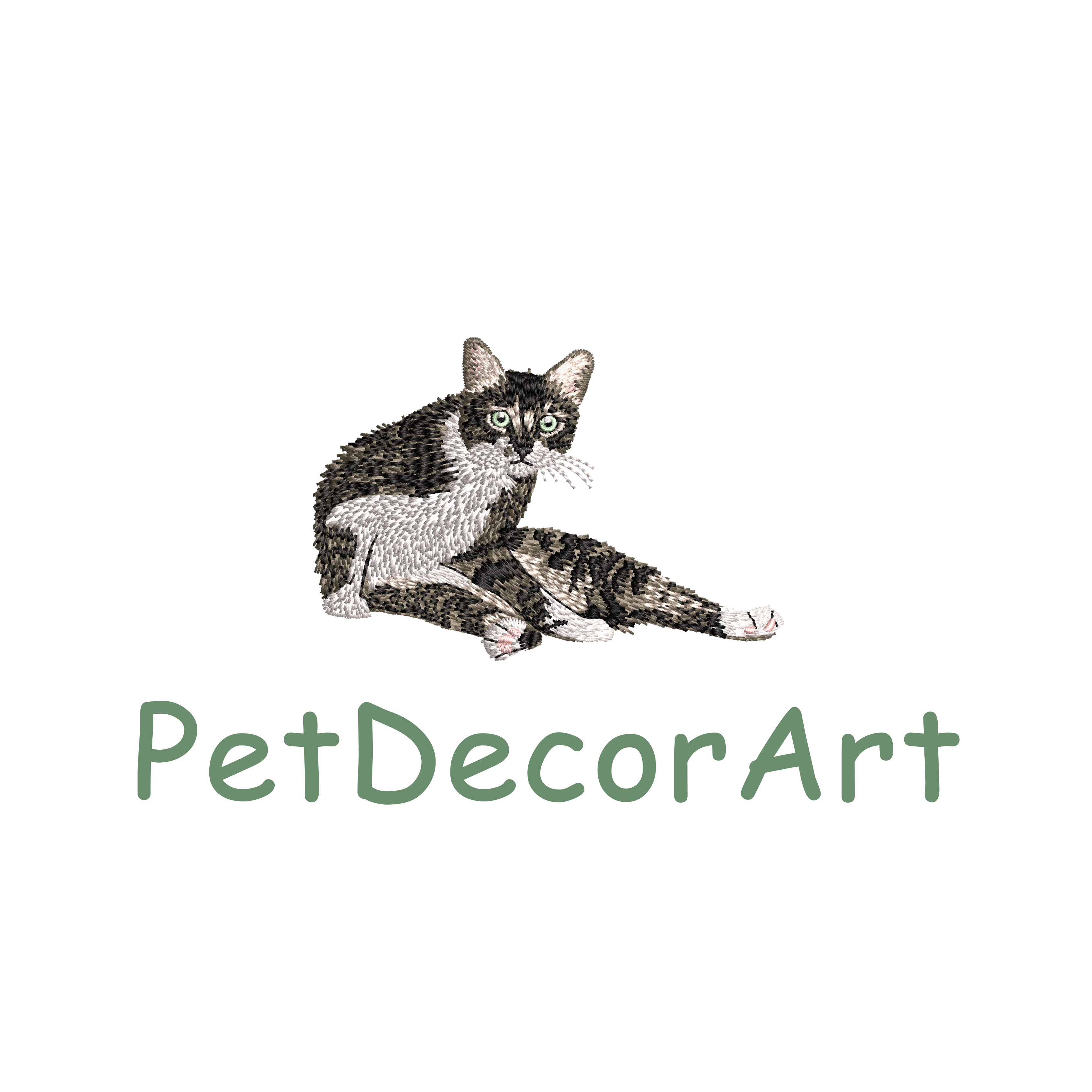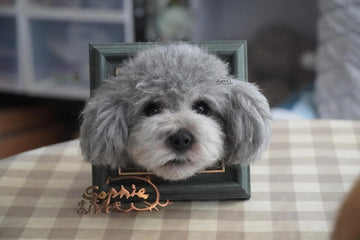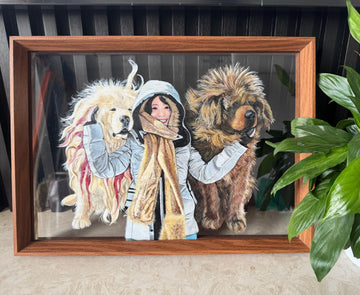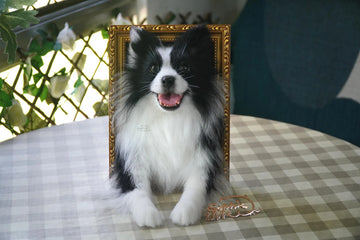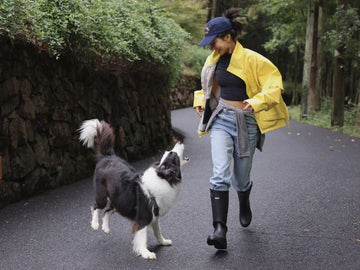Updated: October 2025 · Read time ~18–24 minutes
Commissioning a handmade wool felt pet is equal parts heart and homework. The right artist captures your animal’s tiny truths—ear set, muzzle width, the way one brow lifts when you say “walk?”—and builds a small heirloom you’ll keep in reach for years. The wrong arrangement risks delays, vague likeness, or damage in transit. This guide is a practical pre-purchase checklist: portfolio signals, material choices, proofs and revision policies, pricing traps, shipping standards, and how to buy confidently if you’re shopping for loss of pet gifts. We’ll also link directly to product options if you’re ready to browse custom felt pet formats and prices.
1) Portfolio Signals That Actually Predict Likeness
Don’t be dazzled by pretty photos alone—look for repeatable craft. Strong portfolios show three things consistently: structure (skull and ear geometry), pattern logic (markings placed where anatomy demands), and surface finish (clean edges without fuzz). Use this mini-audit:
Positive signals
- Multiple angles per piece: front, 45°, profile, and top-of-head shots.
- Eyes show lids, not just circles—there’s a visible eyelid ridge and tear duct corner.
- Markings follow anatomy: cheek patches wrap properly; blaze lines taper naturally.
- Fur transitions blended in micro-gradients, not harsh stripes (unless the pet actually has them).
- Repeated quality across different species and coat patterns (tortie, brindle, calico, merle).
Red flags
- Only one flattering front photo per piece; no side views—could be hiding flat profiles.
- “Sticker look” eyes with no lids; pupils off-center in multiple works.
- Copy-paste head shapes; all noses identical regardless of breed/mix.
- Heavy surface fuzz or pilling in finished photos (signals under-dense felting).
- Watermarks or images that look AI-upscaled; inconsistent lighting suggests borrowed images.
How to test consistency: Pick three random pieces in the portfolio. Do ear heights vary properly? Are muzzle widths appropriate by breed? Does the artist show seniors (grey mask) and black coats (highlight control) with equal success? If “yes” across the set, your odds of strong likeness go up.
2) Materials & Build: What to Ask (and Why It Matters)
Wool felt sculpture is engineering in miniature. The materials and internal build determine not just look but longevity. Ask direct questions—good studios answer plainly.
| Topic | What to Ask | What You Want to Hear | Why It Matters |
|---|---|---|---|
| Core density | How dense is the internal core? Is it needle-compacted before surface work? | “We build a compact core first; surface fiber is a thin skin for detail.” | Dense cores hold shape; thin skins allow clean detail without fuzz. |
| Fiber types | What wool types do you use for core vs. surface? | “Coarser core wool + fine Merino/ blends for surface transitions.” | Core grips; fine fibers make realistic cheeks/eyelids. |
| Eyes & noses | Glass/resin eyes? Sculpted lids? Polymer nose? | “Glass/resin eyes set with lids; polymer nose, matte-sealed.” | Eyes create life; lids prevent “sticker” look. |
| Armature | Do you use wire armatures for full-body works? | “Yes when size/pose needs it; wrapped to prevent slip.” | Armatures stabilize legs/tails; safer moving/posing. |
| Finish & protection | Any protective spray? Does it alter color? | “Matte textile sealant, tested on swatches; no sheen shift.” | Light wear resistance; must not darken tones. |
| Sustainability | Ethical sourcing? Packaging materials? | “Responsibly sourced fiber; recyclable packaging; minimal plastic.” | Better for home environments and brand values. |
Tip: If you prefer quick, protected displays, consider framed reliefs and domes. For ready-to-browse formats and price tiers, see our custom felt pet lineup.

3) Proofs, Revisions & Communication Rhythm
A predictable proof process is the difference between “almost” and “it’s them.” Push for clarity up front—how many proofs, what gets adjusted, and when.
Best practices
- Proof timing: one mid-stage proof (structure) + one detailing proof (surface/lids/markings).
- Specific edits: ear height, muzzle width, blaze position, eye color/lid shape.
- Reference pairing: artist shows proof beside your photos; you annotate with arrows.
- Response window: 24–72 hours keeps the schedule moving.
- Finals: artist sends 3–4 angles before shipping.
What to include in your brief
- Angles: front, 45°, side, top-of-head; tail carriage for dogs; ear backs for cats.
- Color notes: “left paw has white sock,” “nose has faint scar,” “muzzle greyed.”
- Signature expression: blep, head-tilt, soft squint after walks.
- Display plan: frame/dome/mini—affects pose and finish choices.
4) Prices, Deposits & Red Flags
True handwork takes time. Prices track hours, complexity, and finishing depth. Lowball quotes usually mean rushed cores and fuzzy surfaces.
| Format | Typical Range (USD) | What You’re Paying For | Common Traps |
|---|---|---|---|
| Mini keychain / brooch | $59–$120 | Compact likeness; durable dense felting; hardware/pin backs | Overly soft cores; no sealant; eyes without lids |
| Framed relief | $250–$1,200 | Protected display; controlled viewing angle; UV/dust reduction | Thin surface layer; glass pressing on wool; poor frame mounting |
| Full-body | $500–$2,000+ | Armature, glass/resin eyes, whiskers; refined anatomy | Wobbly legs, no internal support; limited proof stages |
Balanced approach: 30–50% deposit at booking, remainder before shipment, clear scope for proofs and edits, written timeline, and a simple commission agreement.
5) Lead Times: Setting Realistic Expectations
Good studios book up—especially in Q4. Expect 1–2 weeks for minis/brooches, 2–4 weeks for framed reliefs, and 2–5+ weeks for full-body works. Pattern-heavy coats (tortie, brindle) and parrot plumage add blending time. Memorial commissions deserve breathing room; plan at least two extra weeks to allow thoughtful proofs.
Plan earlyApprove fastShip with buffer

6) Packaging & Shipping: How Good Studios Prevent Damage
Felt is resilient but hates crush and humidity. The difference between “perfect arrival” and “mussed cheek” is packaging discipline.
What great packaging looks like
- Rigid inner box + outer shipper; domes framed in place (no rattle).
- Soft support under ears and muzzle—tissue or foam, never adhesive on wool.
- Care card on top; opening directions; silica gel if shipping in humid seasons.
- Winter note: acclimate 12–24h before unboxing in cold climates.
Insurance & tracking
- Named insured value equal to commission price.
- Tracked service with signature for framed/domed pieces.
- Photo of the packed piece before sealing the box—request it.
7) Display Options: Frame, Dome, or Free-Standing?
Decide display early—it guides pose, finish, and budget.
| Option | Pros | Watch-outs | Best For |
|---|---|---|---|
| Framed relief | Protected from dust/UV; strong likeness at one angle; ready-to-hang | Less multi-angle interaction; glass must not press wool | Memorial walls, minimalist interiors |
| Glass dome + base | 360° viewing; museum vibe; excellent dust control | Glare near windows; measure height for ears | Centerpieces, mantles, collectors |
| Free-standing | Most “alive”; pose reads in space | Needs dusting; safer in cabinets; cautious handling | Daily-life shelves, desktop companions |
| Wearable (brooch) | Conversation magnet; always with you | Friction risks; store in pin case | Stylish gifting, minimal storage |
| Keychain / bag charm | Budget-friendly; portable | Patina over time; avoid tight pockets | Casual gifts, first-time buyers |
8) Buying for Memorials: Tone, Timelines & Keepsake Ethics
Memorial gifts carry quiet weight. Aim for calm timelines and gentle presentation. If this commission is for a friend grieving a pet, consider a framed relief (protected, low-maintenance) or a small dome they can place somewhere steady. Pair it with a card that invites a story: “Tell me about this moment in the photo.”
Including fur or ashes? Many artists can place a tiny vial behind the frame backing or under a base. Direct mixing into wool is less common (can affect density/color). Discuss discrete placement that preserves the piece’s structure.
9) One-Page Buyer Checklist (Printable)
Copy into your notes app or print. Mark each box before you pay a deposit.
| Check | Question | Pass / Action |
|---|---|---|
| Portfolio | Multiple angles per piece? Clean eyelids, correct muzzle/ear anatomy? | Yes → proceed. No → request more samples. |
| Materials | Dense core; fine surface fiber; glass/resin eyes; optional sealant? | Confirm in writing. |
| Proofs | Mid-stage + detailing proofs; edit scope defined; response window agreed? | List edits allowed (ears, muzzle, blaze, lids). |
| Price | Quote includes hardware/frame/dome; tax/shipping disclosed? | Request invoice; avoid cash-only. |
| Timeline | Lead time matches your date; holiday buffer added? | Put date in contract. |
| Shipping | Rigid inner box; soft supports; tracked & insured; acclimation note? | Ask for packed photos. |
| Care | Care card included? Display guidance (frame/dome)? | Confirm written instructions. |
10) FAQ: Photos, Edits, Repairs, International Orders
What photos produce the best likeness?
One front, one 45°, one side, one top-of-head, plus eye close-up in daylight and one with flash. Add markings: chest/underbelly, ear backs, tail carriage. The more angles, the less guesswork.
Can I still commission with only one decent photo?
Yes, with constraints. Your artist may lean stylized (chibi/relief) to avoid anatomical guesses. Share any similar-breed references to triangulate skull and ear structure.
What edits are reasonable?
Structure and markings: ear height/angle, muzzle width, blaze/patch placement, eyelid shape and pupil positioning, whisker density. Wholesale pose changes mid-stream often require a rebuild.
How are repairs handled if something shifts in shipping?
Great studios include a short repair window. Minor scuffs: re-needle edges; gentle steam reshape for dents. You may be asked to return the piece or visit a local partner for touch-ups.
Do you ship internationally?
Yes, but add time for customs. Domes/frames must be packed as single units with rigid supports. Acoustic foam or tissue cradles features; never apply adhesive to wool.
Is there a reference to learn formats and care?
See our comprehensive 2025 guide to forms, prices, and care—start here: wool felt pet. When you’re ready to pick a format, browse custom felt pet options.
11) Ready to Commission? Smart Next Steps
- Skim the portfolio with the “three-piece” test for consistency (ears, muzzle, markings).
- Draft a concise brief with dates and display choice (frame/dome/mini).
- Confirm proofs, edit scope, price inclusions, and shipping standards in writing.
When you’re ready to compare formats and timelines, see our current lineup of custom felt pet commissions. If you’re buying for a friend navigating loss, keep the gifting tone gentle and consider this companion article on loss of pet gifts.
